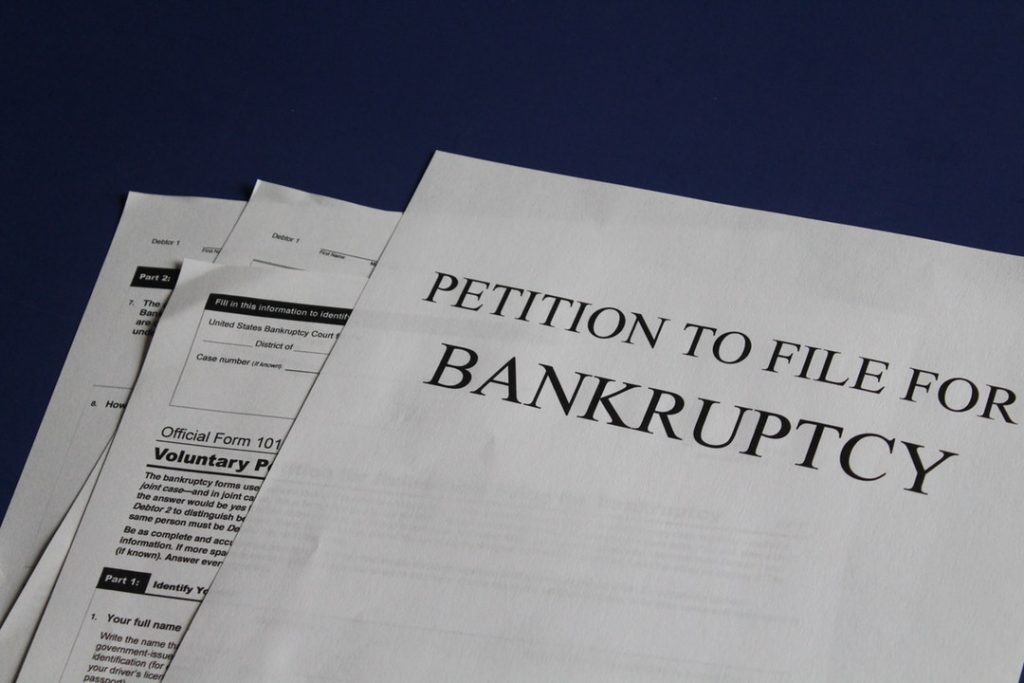According to United States Courts, 12.8 million bankruptcy petitions were filed between 2005 and 2017. To declare bankruptcy has become a norm in the country.
Bankruptcy is a legal proceeding whereby, after an assessment of assets and liabilities, you are considered incapable of paying debts. Bankruptcy eases the debt burden of people who suffer financial breakdown to give them a second chance.
Have you ever reached a financial crossroad where you had to consider bankruptcy? How did you handle this scary proposition? If you had been on the brink of foreclosure or auction, declaring yourself or your company can save you.
Keep on reading to learn more!
Understanding Bankruptcy
Before declaring bankruptcy, you should be aware of the type to consider. There are three main types of bankruptcy;
- Chapter 7
- Chapter 11
- Chapter 13
Before reaching to any of the above bankruptcy conditions, you have to meet a certain threshold.
Chapter 7
This bankruptcy is the most popular that many citizens file. The court appoints a trustee to sell some of your property and pay the proceeds to creditors.
The trustee can exempt some of your assets, such as household goods, car, clothing, and pensions from liquidation. When filing for bankruptcy, you can list the property to exempt.
Chapter 13
This bankruptcy is different in such a way that a court-agreed plan is put in place to pay debts. Usually, this plan goes for three to five years. During this period, you can fully or partially fund your debts.
Chapter 13 bankruptcy law does not require asset liquidation and allows you to keep your property.
Chapter 11 Bankruptcy
This is a complex form of bankruptcy that involves debts, assets, and the debtor’s business affairs. Also known as the US bankruptcy code 11, corporations file it to restructure their debts. The terms of the code are subject to the debtor’s obligation fulfillment under the reorganization plan.
The Process of Declaring Bankruptcy
You have to declare bankruptcy under either of the above codes. There are several legal steps to follow when filing bankruptcy;
1. Financial Inventory
This is the first step in declaring bankruptcy. You should assemble all your financial information and facts in proper details. Preparing your financial details requires time.
It is a must to include the spouse’s financial information if you are married, but your spouse is not filing. You should include the following information;
Income
The law requires you to add all your past and future income. You should also include the source and how often you receive the income. Income can be from the following;
- Regular working income
- Side jobs incomes
- Investment interest and dividends
- Unemployment compensation
- Pension’s income
- Household contributions and donations
All the information about your income should be factual and provable.
Debts
What is your current debts situation? When filing for bankruptcy, include all your debt information. This includes creditors, interest rates, and monthly payments.
Also, include the debts that you are currently paying.
Property and Assets
When you want to declare bankruptcy, include all details on your assets and property. Assets include the following;
- Real estate
- Stocks
- Cars
- Home furnishings
- Personal Possessions
- Clothing
- Art
- Savings accounts
It is appropriate to add all your valuable property without hiding anything. The trustee will determine the exempt property in case of liquidation.
Household Expenses
Include all your monthly household expenses when filing for bankruptcy. Household expenses include the following;
- Medical expenses
- Rent cost
- Mortgage
- Clothing
- Child support
- Alimony
- Transportation
- Food
- Taxes
You calculate monthly household expenses as averages of the previous years.
When declaring bankruptcy, the trustee might require all this information. Therefore, you should proper documentation on hand and online record prints.
2. Credit Counselling
Since declaring bankruptcy has far-reaching consequences, you have to undergo credit counseling. After experiencing the counseling session, you obtain a certificate to file bankruptcy.
During this process, the counselor should review your personal and financial situations. The counselor should also offer debt management and budgeting advice as bankruptcy alternatives. Only approved agencies should provide credit counseling.
This process should take at most six months before the petition.
3. Filing the Paperwork to Declare Bankruptcy
The process of declaring bankruptcy is all about the paperwork. You need to obtain the documents from the court. When submitting the paperwork, it’s advisable to seek guidance from an experienced attorney.
4. The Creditor’s Meeting
After filing the necessary paperwork, the trustee should arrange a meeting with your creditors. In bankruptcy laws, this is also known as the 341 meetings. This meeting allows the creditors to determine the payments plans and the financial situation of the debtor.
The trustee can write letters or mail the creditors scheduling physical meetings. The creditor can send representatives to question your or the trustee. Both the judge and lenders should not appear in the meeting.
Also, you are sworn under oath to answer queries in the meeting to the best of your knowledge. During this meeting, the trustee informs you of the effect of reaffirming the debt and declaring bankrupt. The meeting also acts as the trustee’s platform of looking for evidence or abuse.
After the meeting, the creditors can either abide by your provisions or submit formal objections. In case there is no objection, the petitions go forward.
5. Hearing and Petition Determination
The judge determines your case after you have submitted all relevant information. The debtor might not need to appear in court unless the case was very complicated.
If the judge finds that you committed fraud or did not disclose all the information, you may face criminal prosecutions.
6. Post-Bankruptcy Counselling
After determination of the petition, the debtor should take a course on money management and budgeting. This counseling should happen before the discharge of debts. The debtor should acquire a certificate showing they underwent the process.
Declare Bankruptcy – The Bottom Line
This is the general process of declaring bankruptcy. In Chapter 7, when the debts are discharged, the creditor cannot attempt to collect them from you. In chapter 13, the payment plan will be followed.
To declare bankruptcy is not a simple affair and can affect your credit score for seven to ten years. Some limits control the discharge of debts through bankruptcy. To ensure the process is smooth and does not backfire on you, engage a suitable attorney.
For more information, read this post on money management.

Rachel Slifka is a freelance writer and human resources professional. She is passionate about helping fellow millennials find success with their finances and careers. Read more by checking out her website at RachelSlifka.com.







